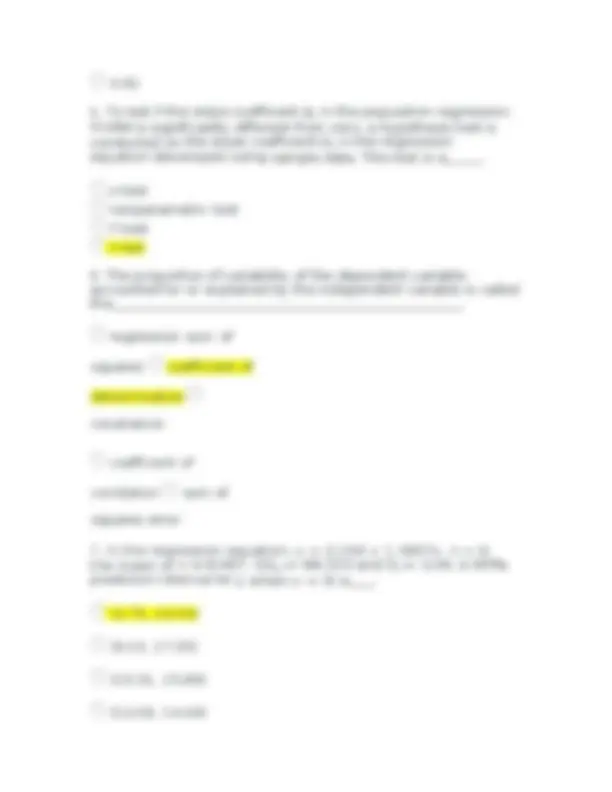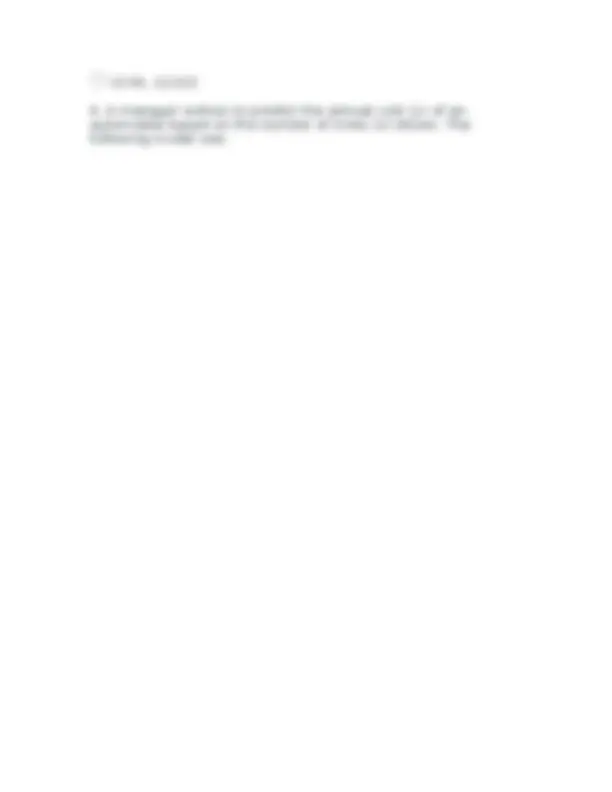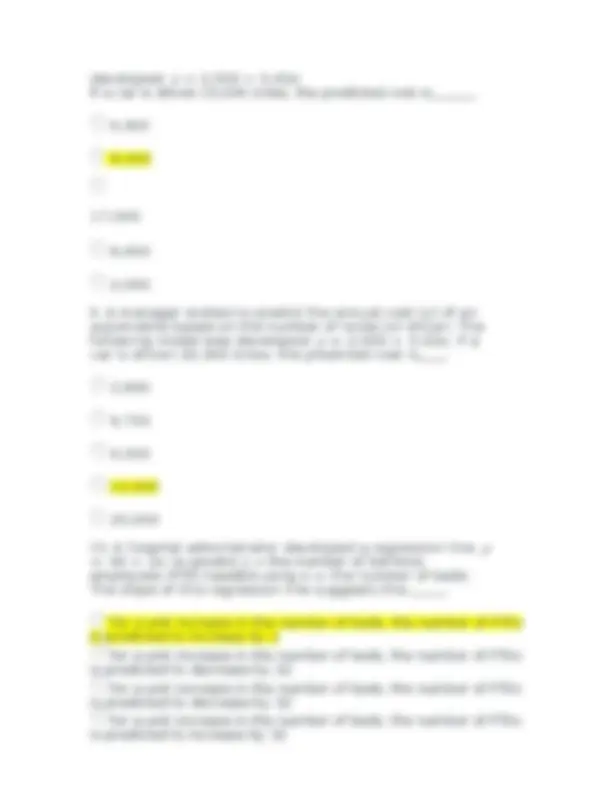





Study with the several resources on Docsity

Earn points by helping other students or get them with a premium plan


Prepare for your exams
Study with the several resources on Docsity

Earn points to download
Earn points by helping other students or get them with a premium plan
Community
Ask the community for help and clear up your study doubts
Discover the best universities in your country according to Docsity users
Free resources
Download our free guides on studying techniques, anxiety management strategies, and thesis advice from Docsity tutors
A series of exercises designed to reinforce understanding of key concepts in regression analysis. It covers topics such as assumptions of the regression model, interpretation of coefficients, calculation of residuals, and the relationship between correlation and determination. The exercises provide practical applications of regression analysis in various fields, helping students develop a deeper understanding of the subject.
Typology: Assignments
1 / 7

This page cannot be seen from the preview
Don't miss anything!




developed: y = 2,000 + 0.42 x. If a car is driven 15,000 miles, the predicted cost is. 6, 8, 17, 8, 2,
production run